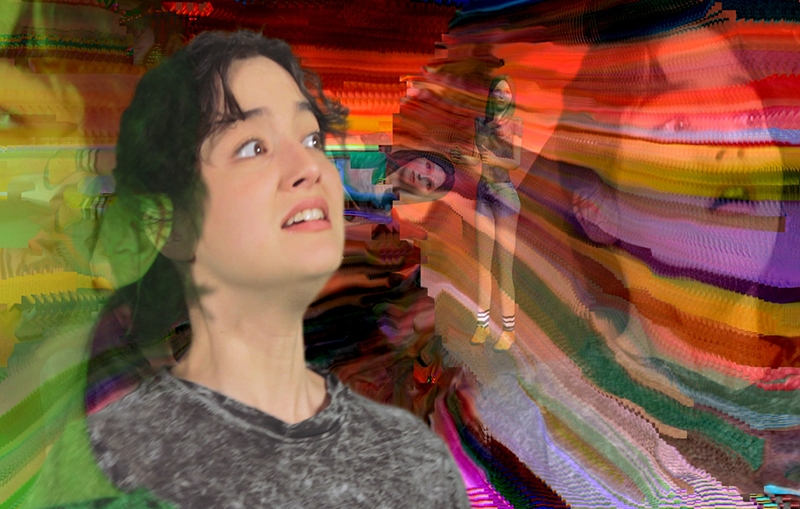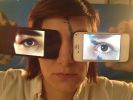
Salt 9: Jillian Mayer
Art
Jillian Mayer, a south Florida–based artist and Sundance Film Festival alum, is the ninth artist to be featured in the Utah Museum of Fine Art’s ongoing Salt series, which highlights contemporary work from emerging artists. Much of Jillian Mayer’s work investigates the fragmenting consequences of Internet usage through some of its most ubiquitous media—catchy pop songs, humorous YouTube videos, chat rooms and ephemeral linkages. Her practice relies on viewer participation and by co-opting the Internet as its virtual gallery space, it often involves viewer collaboration. While the trajectory of this work—videos, websites, short films, photography, performances and installations—mimics the experience of ephemerality, each piece reveals hidden implications of physicality, and the pitfalls of the so-called technological singularity, in actual time and space.
As a child of the 1980s, Mayer’s early Internet experiences were novel and ephemeral. “I wasn’t particularly savvy,” Mayer says. “I was like a tourist, looking around, getting into chat room trouble, pretending I was different people—older, a different sex.” The Internet’s creative potential intrigued Mayer. “It was one of the first places where I could interact with people that I didn’t know and be anybody that I wanted.” In conversation, Mayer used the metaphor of the Wild West to describe the Internet, where people have the opportunity to move from town to town escaping stale lives, creating new ones. “I was always really interested in identities shifting and morphing,” she explained. “You could use that place to have an avatar, be whoever you want, be detached from your actual identity.” Mayer has also recognized the accessibility that the Internet offers to those not living in major art world capitals, but are living in digitally connected, globally minded realities. “The online environment is this democratized place for engagement—as long as you have an Internet connection, you’re already invited,” she says. Pop music structures, bright colors, and platforms that are familiar to a wide audience also help Mayer’s work to be engaging across the vastness of the Net.
Mayer’s early focus was fiber art and installation, often performative in nature, though her work has shifted towards Net-based art in recent years. An early video, “Scenic Jogging,” was one of 25 selections for the Guggenheim’s YouTube Play: A Biennial of Creative Video in 2010, and features Mayer frantically running after (or from?) a digital pastoral projection moving against the backdrop of a gritty urban landscape, reminding viewers of the discrepancy between the virtual and the actual. In the 60-second video “I Am Your Grandma,” which has garnered 2,581,311 likes since 2011 and inspired numerous spoofs on YouTube, Mayer sends a timeless video message for her potential unborn grandchild while wearing a handful of frighteningly Gaga-like costumes (though it’s actually an homage to performance artist Leigh Bowery). In 2012 and 2013 Mayer premiered her short films Life and Freaky Times of Uncle Luke and #PostModem, a meta-pop musical told through a series of cinematic tweets, at the Sundance Film Festival.
“What’s the point of living offline anymore?” Mayer asks in “MegaMega Upload,” one of the songs in #PostModem. Can we object anymore? Another project, Erasey Page, lets you throw away the websites of a simulated Internet. But can we get rid of our digital selves so easily, and do we want to completely? Mayer’s videos and installations don’t discriminate; rather, they offer hybrid realities for our physical and digital selves to explore. Mayer’s Cloud Swing, an installation that places a working swing set in front of bright blue screens of a cloudscape, allows participants to be re-enchanted by an obvious virtuality. “You’ve kind of reduced yourself to this childlike state where you’re just enjoying it, and there’s no more issues with it anymore,” she says. “You’re satisfied with the artificial quality of the beautiful sky.”
Mayer also contributes to Sundance’s New Frontier, dedicated to expanding narrativity and storytelling into virtual and ephemeral spaces. During this year’s festival, Mayer will participate in a panel discussion called “The Beauty of Failure.”
For the Salt exhibit, which opens to the public on Friday, January 17, Mayer has created new, multimedia objects and artwork that explore identity on the Internet. “It’s about identity maintenance and formation, mainly online,” she says, “What things people undergo. There’s sculpture, some video, there’s photos, written text—kind of a mix.” Whitney Tassie, the UMFA’s curator of modern and contemporary art, says of Mayer, “I like the way she views the world, it’s definitely worthy of me taking a closer look and everybody else, too.” Like myself and many others, Tassie first experienced Mayer’s work online and has followed her ever since. “I’ve been curious about her connection to the Internet,” Tassie explained, “both as a presentation tool and as a subject matter—she’s very interested in how we as a society are connected with the digital world.” The UMFA was able to give Mayer a creative grant for the Salt exhibit. “The series is meant to show emerging or mid-career living artists and it has an international scope,” Tassie says. “We keep a dedicated gallery space—the Salt Gallery—so we can be thinking of and looking at artists that are making new work.”
In collaboration with Whitney Tassie and the UMFA, Jillian Mayer’s multi-mediated aesthetic will be on display, IRL, as the ninth installment of the ongoing Salt series.
Mayer and Tassie will discuss Mayer’s work at 5 p.m. on Thursday, January 16. Salt 9: Jillian Mayer will run from January 17 – August 17, 2014 at the Utah Museum of Fine Arts. You can find more of Mayer’s work here, and visit her YouTube channel here. Watch the “I Am Your Grandma” video below.




